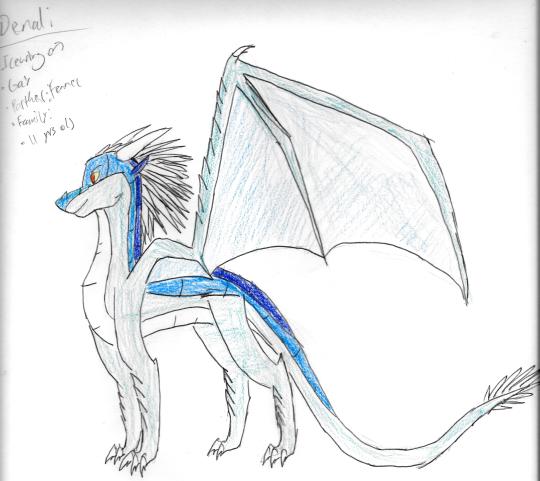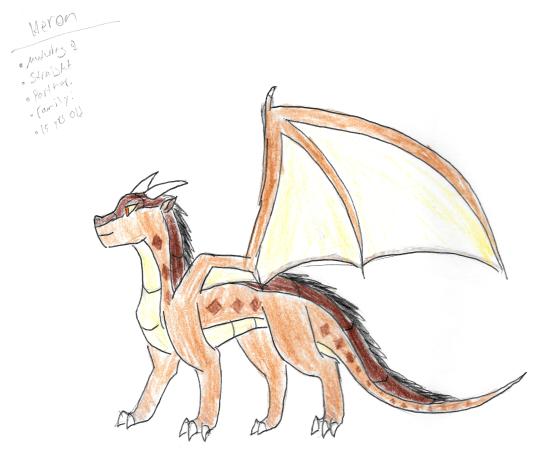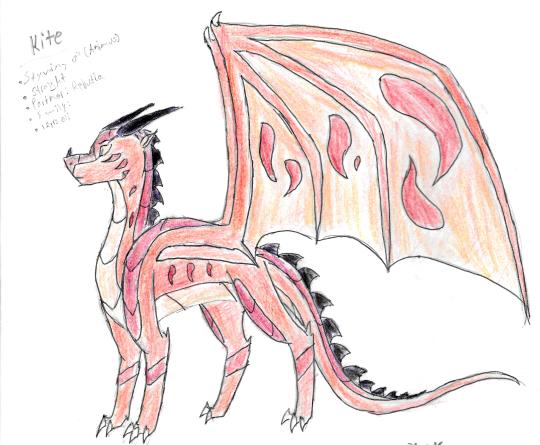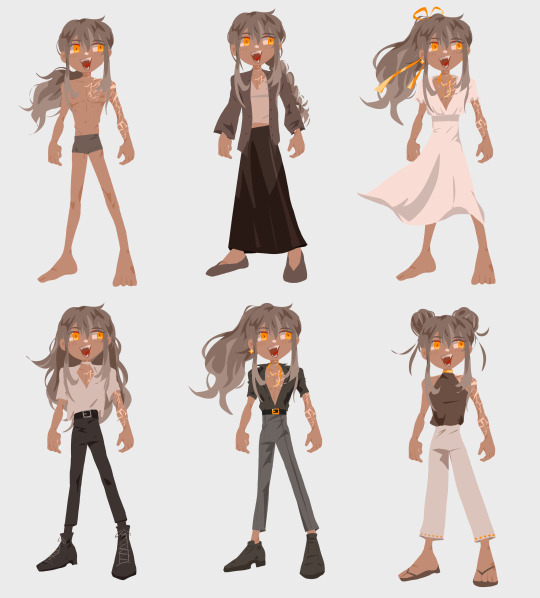#acuity
Text
Jesus’ mental acuity and emotional wellbeing
The Jesus presented in the Gospels reflects an exemplary personal and moral character, one that transcends the frail imperfect human moral condition... In sharp contrast to known deceivers, Jesus showed no signs of being motivated by wealth, fame, power, or pleasure... Frankly for those who have examined the life of Jesus, accepting him as the divine Messiah is much easier than concluding that he was a moral and spiritual fraud.
Of all men, Jesus seems to have a secure grip on reality. He consistently exhibited profound mental and emotional stability. In every crisis that he confronted-whether being mocked and interrogated by his enemies or undergoing the horrific torture of crucifixion-Jesus’ mind reflected an amazing clarity, sobriety, and underlying emotional stability.
Jesus transcends all categories concerning human mental health, emotional stability, and moral virtue. A powerful reason for concluding that Jesus was indeed God incarnate is that he was fundamentally different from every other human being that ever lived. Even Socrates, the Buddha, and Confucius pale in comparison to him. In fact, standards of human goodness are measured according to his life and character.
~ Samples, Kenneth Richard. ‘Without a Doubt: Answering the 20 Toughest Faith Questions.
6 notes
·
View notes
Text
Get a Brand New Look with Acuity's Hair Template Website
Why deal with the headache of brainstorming ideas and wrestling with the intricacies of web design when you can have a premade website do the heavy lifting for you? This customizable template allows you to tweak the design and layout to your heart's content, resulting in a slick and polished site that reflects your unique style. So, sit back, relax, and let the premade website do the hard work for you!
https://valenneydesignstudio.etsy.com/listing/1608923971



#canva#canva template#black own#digital products#estyshop#estyseller#made in canva#estystore#website#web design#hairstyle#wedsite design#acuity#booking clients#appointment
2 notes
·
View notes
Text

I still like this car. A lot.
13 notes
·
View notes
Text

Haven’t posted in awhile, this is my new car 09 GE8. On SSR Type X wheels. Hope all my followers are doing well!
12 notes
·
View notes
Text








OLD 2016/2017 ART
Some Wings of Fire characters I made and then promptly never did anything with. Can't remember if I ever gave them away or not.
#wings of fire#wof#dragon#aruba#acuity#fennec#denali#heron#rebutia#kite#sandwing#skywing#rainwing#mudwing#icewing#nightwing#seawing#traditional art#pencil#colored pencil#Amirisqueer#Art
2 notes
·
View notes
Text
Nourishing the mind, hand, and stomach
New Post has been published on https://thedigitalinsider.com/nourishing-the-mind-hand-and-stomach/
Nourishing the mind, hand, and stomach


As early as middle school, Branden Spitzer loved to watch cooking shows and experiment with recipes in his family’s kitchen. It was a clear harbinger of his interest in materials science, he says now. Once he discovered that he could delight others with a perfectly executed pie, he began to see the many ways that his passion for baking might branch into other areas requiring technical acuity.
“We have this deep connection to food, the things that we wear, the products around us that we experience or work with every day,” says the MIT senior. “I hope we can make those things even better using science and engineering.”
Spitzer is a materials science and engineering major and has rounded out his education by cross registering for food science classes at Harvard University. He has pursued a variety of research opportunities related to food and sustainability, from extending the shelf-life of produce to developing lab-grown meat.
Spitzer also sees food as a means of social nourishment. He enjoys exploring restaurants and having dinners with friends, and takes special pleasure in planning and putting together meals. “I love making pies and cooking because you can share something with people that they think is really tasty,” he says. “And by eating the food they can understand all the thought and everything that went into it. I want the work or research I go on to do to have that same sort of tangible impact.”
Sampling a huge menu
Upon beginning his first year at MIT, Spitzer was overwhelmed by the seemingly endless amount of activities the Institute had to offer. He says the busy student culture was one of the things that attracted him to MIT, yet once he was face-to-face with it all, he didn’t know where to begin. He recalls one of his first-year advisors instructing him to “ride the wave,” and he took this to heart. Open to trying anything, Spitzer set forth on several academic and extracurricular journeys that would lead him in completely different directions through his four years.
He pursued research projects centered on food and sustainability. In one of his first research positions, Spitzer worked for Mori, a Cambridge-based startup that makes a silk-based coating that slows the spoiling of fruits and vegetables. His longest-running research project, in Professor Markus Buehler’s Laboratory for Atomistic and Molecular Mechanics, involves working with mycelium, the root systems of mushrooms, to improve and alter the growth of the material for use in 3D printing. He spent a summer interning for a company in South Africa that is working on a lab-grown meat product, and currently he is interning for Faerm, a plant-based cheese company in Copenhagen, Denmark. He hopes to continue this in this direction after graduation, either at a startup or in graduate school studying materials science or biological engineering.
Spitzer also strives to make a positive impact on his local community at MIT through his work. He participated in activities ranging from physical education to the arts, and everything in between. He joined the student organization MCG, the MIT Consulting Group, solving real-world business problems for clients. Spitzer is also a member of the Phi Delta Theta fraternity, where he served as vice president for three semesters and introduced an initiative to prioritize inclusivity and mental health awareness. And, he joined MIT’s lighting design group, which he says exposed him to new entirely new communities of artists and engineers.
Spitzer has been fond of traveling since he was a child. He recalls taking trips with his family often, visiting historical and global landmarks. In the past four years he has embarked on multiple study abroad and work experiences through MISTI and is enthusiastic about the unexpected places his internships have taken him. He has spent time in the U.K., Brazil, and South Africa, and will be studying in Denmark this semester.
In Brazil, Spitzer helped to develop and teach a materials science program and class. He says it was exciting to share the subjects of polymers, recycling, and sustainability with students in a different part of the world. In South Africa, Spitzer interned for the Mzansi Meat Co. (now Newform Foods), which he came across by surprise after searching for companies that were making cultured meat products.
Pirates at MIT
Spurred by MIT’s physical education requirements, Spitzer has found a passion for several sports activities. Sailing, for example, has become one of his favorite hobbies. “It’s super cool that we have a chance to do these crazy things,” he says when referring to his time spent taking out sailboats to practice for his sailing class on the Charles River.
Sailing is one of four physical education classes needed to obtain the MIT Pirate Certificate, an incentive that encourages participation in MIT’s P.E. offerings. Spitzer pursued this achievement, enrolling in archery, rifle, and fencing classes over several semesters. The diverse course selection allowed for unexpected discoveries. “I was surprised and blown away by how much the rifle practice was an exercise in thought, focus, and meditation,” he says. “It was very different than I expected, in a very pleasant way.”
Ice skating is another discovery Spitzer made through his four required gym classes. He has taken many more classes by now though since they are “super fun.” Beginning as a nervous newcomer with no experience, Spitzer now takes an intermediate skating class where he develops his skills in turns and speed skating.
Spitzer also enjoys recreational cycling and indoor rock climbing in his spare time, as well as yoga and dancing. He has taken multiple dance classes in his time at MIT and has been a member of the organization MIT DanceTroupe for four years.
Whether in the kitchen, lab, or gym, Spitzer has found a robust community in all corners of the MIT campus and beyond. Rather than choosing one area of focus, Spitzer states the most integral aspect of his student experience at MIT was getting a taste for everything: “You just try things out here. You learn the things you love or the things you hate, and get to do something really cool along the way.”
#3d#3D printing#Acuity#Africa#artists#Arts#awareness#Biological engineering#Brazil#Business#classes#Community#Companies#consulting#cooking#course#dance#Department of Athletics#Physical Education and Recreation (DAPER)#Design#direction#Discoveries#DMSE#education#engineering#engineers#Exercise#Food#Global#growth
0 notes
Text
Dreadlock Retwist & Color
Lighten up my roots Ms Inez #Retwist and #color #dreadlock #reelsvideo#story #dreadheads #dreadlockshop #symphony #beforeandafter #hairdye #locs #dreadstagram #dreds #locmaintenance #locretwist #locmaintenance
http://hairtamersstudio.com
View On WordPress
#dreadlock#dreadlocklife#dreadlockshop#hairstylist#acuity#baton rouge dreadlock care#Baton rouge hair salon#baton rouge hair studio#baton rouge haircuts#Baton rouge hairstylist#hairtamersstudio
1 note
·
View note
Text

Cogniva: The Breakthrough Smart Chew
Unlock your mind with the power of nature
Cogniva : la percée intelligente
Déverrouillez votre esprit avec le pouvoir de la nature
#santéducerveau#mâchéintelligente#cognitif#focus#energie#esprit#brainhealth#smartchew#cognitive#energy#spirit#pouvoir#power#nature#vigilance#alertness#concentration#acuité#acuity#vitalité#vitality#memory#memoire
0 notes
Link
We all have intuition, but some people use it better than others. These include the world’s most creative people, such as inventors, artists, leaders, sports people, politicians, teachers, explorers, actors, spacemen, circus acts, doctors, engineers, musicians, mime artists… all these are people who listen to their intuition. It doesn’t rule them, it just gives them another perspective.
To become more intuitive you just have to listen more. When we are rushing around doing 100 things at the same time, our sensitivity decreases. We focus upon the job in hand until it’s done, often ignoring our owm needs and well-being. Increasing our sensory acuity helps us listen to what our intuition is telling us.
#active#acuity#creativity#gutfeeeling#intuition#leadership#listening#mojo#sensitivity#sensory#wellbeing#zest
0 notes
Text
Beauty Acuity| Hair | Lash | Canva Acuity Template | Acuity Schedule
Why struggle with web design when a pre-made website can handle it for you? Customize this template to your liking for a polished site that reflects your style. Sit back, relax, and let the pre-made website do the hard work!



#canva#black own#canva template#digital products#estyseller#estyshop#estystore#made in canva#web design#website#hair website#lashes#luxury#luxurious#booking clients#acuity#beautician#bueaty#bueatybookingsite#bueatysite
0 notes
Text
Waipahu girl
Real teen thief spermed
Amateur Native American mix destroys cock with her TIGHT pussy!
Petite blonde fucks machine in bondage
Excited milf Carmen Valentina goes on a hot cock ride on top of the hot stud and bounces of her milf cunt
Amazing tattooed teen enjoys cockriding
Sexy chick is not shy in sharing her glorious hooters
Sexy Shemale Couple Fucking From Behind
Neighbour spied pussy
Desi wife swati Navi Mumbai asshole
#anticontagion#landgraveship#hydrating#demi-hunter#Hahnville#pallettes#Augusti#Czur#tauntingly#Hallerson#epitomizing#Nan-ching#Tidioute#Gotha#kofuku#prologuizer#acuity#hectocotyli#lymphomatosis#apagogic
0 notes
Text

719 notes
·
View notes
Photo

Lake Acuity
#pokemon#pkmn#pokemon platinum#pokemon dppt#pkmn dppt#Trainer Dawn#dawn pokemon#snorunt#chingling#uxie#lake acuity#sinnoh#digital art#digital ilustration#pokemon fanart#landscape#wintercore#snowcore#ice lake
3K notes
·
View notes
Text
Multiple AI Models Help Robots Execute Complex Plans More Transparently - Technology Org
New Post has been published on https://thedigitalinsider.com/multiple-ai-models-help-robots-execute-complex-plans-more-transparently-technology-org/
Multiple AI Models Help Robots Execute Complex Plans More Transparently - Technology Org
Your daily to-do list is likely pretty straightforward: wash the dishes, buy groceries, and other minutiae. It’s unlikely you wrote out “pick up the first dirty dish,” or “wash that plate with a sponge,” because each of these miniature steps within the chore feels intuitive. While we can routinely complete each step without much thought, a robot requires a complex plan that involves more detailed outlines.
Image credit: MIT CSAIL
MIT’s Improbable AI Lab, a group within the Computer Science and Artificial Intelligence Laboratory (CSAIL), has offered these machines a helping hand with a new multimodal framework: Compositional Foundation Models for Hierarchical Planning (HiP), which develops detailed, feasible plans with the expertise of three different foundation models.
Like OpenAI’s GPT-4, the foundation model that ChatGPT and Bing Chat were built upon, these foundation models are trained on massive quantities of data for applications like generating images, translating text, and robotics.
Unlike RT2 and other multimodal models that are trained on paired vision, language, and action data, HiP uses three different foundation models each trained on different data modalities. Each foundation model captures a different part of the decision-making process and then works together when it’s time to make decisions. HiP removes the need for access to paired vision, language, and action data, which is difficult to obtain. HiP also makes the reasoning process more transparent.
What’s considered a daily chore for a human can be a robot’s “long-horizon goal” — an overarching objective that involves completing many smaller steps first — requiring sufficient data to plan, understand, and execute objectives.
While computer vision researchers have attempted to build monolithic foundation models for this problem, pairing language, visual, and action data is expensive. Instead, HiP represents a different, multimodal recipe: a trio that cheaply incorporates linguistic, physical, and environmental intelligence into a robot.
“Foundation models do not have to be monolithic,” says NVIDIA AI researcher Jim Fan, who was not involved in the paper. “This work decomposes the complex task of embodied agent planning into three constituent models: a language reasoner, a visual world model, and an action planner. It makes a difficult decision-making problem more tractable and transparent.”
The team believes that their system could help these machines accomplish household chores, such as putting away a book or placing a bowl in the dishwasher. Additionally, HiP could assist with multistep construction and manufacturing tasks, like stacking and placing different materials in specific sequences.
Evaluating HiP
The CSAIL team tested HiP’s acuity on three manipulation tasks, outperforming comparable frameworks. The system reasoned by developing intelligent plans that adapt to new information.
First, the researchers requested that it stack different-colored blocks on each other and then place others nearby. The catch: Some of the correct colors weren’t present, so the robot had to place white blocks in a color bowl to paint them.
HiP often adjusted to these changes accurately, especially compared to state-of-the-art task planning systems like Transformer BC and Action Diffuser, by adjusting its plans to stack and place each square as needed.
Another test: arranging objects such as candy and a hammer in a brown box while ignoring other items. Some of the objects it needed to move were dirty, so HiP adjusted its plans to place them in a cleaning box, and then into the brown container.
In a third demonstration, the bot was able to ignore unnecessary objects to complete kitchen sub-goals such as opening a microwave, clearing a kettle out of the way, and turning on a light. Some of the prompted steps had already been completed, so the robot adapted by skipping those directions.
A three-pronged hierarchy
HiP’s three-pronged planning process operates as a hierarchy, with the ability to pre-train each of its components on different sets of data, including information outside of robotics. At the bottom of that order is a large language model (LLM), which starts to ideate by capturing all the symbolic information needed and developing an abstract task plan.
Applying the common sense knowledge it finds on the internet, the model breaks its objective into sub-goals. For example, “making a cup of tea” turns into “filling a pot with water,” “boiling the pot,” and the subsequent actions required.
“All we want to do is take existing pre-trained models and have them successfully interface with each other,” says Anurag Ajay, a PhD student in the MIT Department of Electrical Engineering and Computer Science (EECS) and a CSAIL affiliate. “Instead of pushing for one model to do everything, we combine multiple ones that leverage different modalities of internet data. When used in tandem, they help with robotic decision-making and can potentially aid with tasks in homes, factories, and construction sites.”
These models also need some form of “eyes” to understand the environment they’re operating in and correctly execute each sub-goal. The team used a large video diffusion model to augment the initial planning completed by the LLM, which collects geometric and physical information about the world from footage on the internet.
In turn, the video model generates an observation trajectory plan, refining the LLM’s outline to incorporate new physical knowledge.
This process, known as iterative refinement, allows HiP to reason about its ideas, taking in feedback at each stage to generate a more practical outline. The flow of feedback is similar to writing an article, where an author may send their draft to an editor, and with those revisions incorporated in, the publisher reviews for any last changes and finalizes.
In this case, the top of the hierarchy is an egocentric action model, or a sequence of first-person images that infer which actions should take place based on its surroundings.
During this stage, the observation plan from the video model is mapped over the space visible to the robot, helping the machine decide how to execute each task within the long-horizon goal. If a robot uses HiP to make tea, this means it will have mapped out exactly where the pot, sink, and other key visual elements are, and begin completing each sub-goal.
Still, the multimodal work is limited by the lack of high-quality video foundation models. Once available, they could interface with HiP’s small-scale video models to further enhance visual sequence prediction and robot action generation. A higher-quality version would also reduce the current data requirements of the video models.
That being said, the CSAIL team’s approach only used a tiny bit of data overall. Moreover, HiP was cheap to train and demonstrated the potential of using readily available foundation models to complete long-horizon tasks.
“What Anurag has demonstrated is proof-of-concept of how we can take models trained on separate tasks and data modalities and combine them into models for robotic planning. In the future, HiP could be augmented with pre-trained models that can process touch and sound to make better plans,” says senior author Pulkit Agrawal, MIT assistant professor in EECS and director of the Improbable AI Lab. The group is also considering applying HiP to solving real-world long-horizon tasks in robotics.
Written by Alex Shipps
Source: Massachusetts Institute of Technology
You can offer your link to a page which is relevant to the topic of this post.
#A.I. & Neural Networks news#Acuity#ai#applications#approach#Art#Article#artificial#Artificial Intelligence#artificial intelligence (AI)#bing#boiling#book#bot#box#chatGPT#Color#colors#computer#Computer Science#Computer vision#construction#construction sites#container#data#diffusion#engineering#Environment#Environmental#eyes
0 notes
